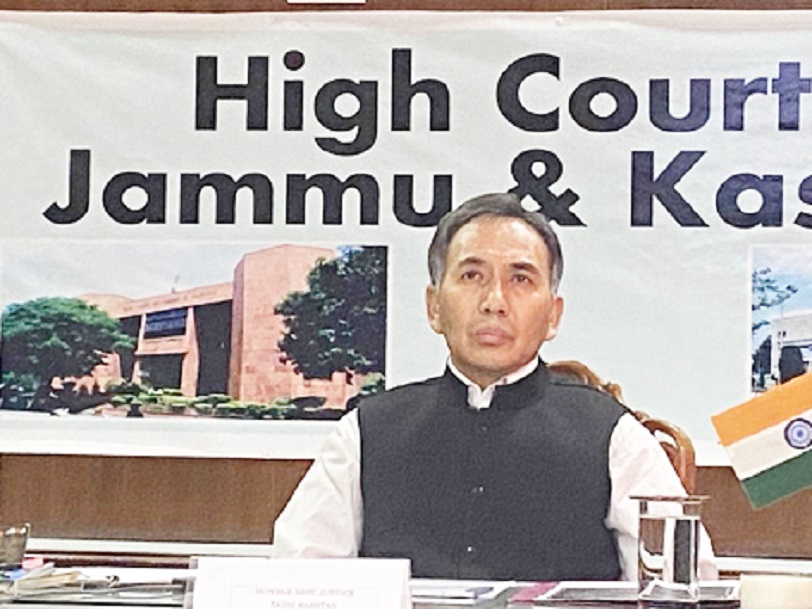
By Parvaiz Bhat
Srinagar- From January 2010 to November 2022, as many as 5,455 cases of lung cancer were registered at Sher-e-Kashmir-Institute of Medical Sciences (SKIMS) which were mainly caused by smoking, doctors said.
The World Health Organization (WHO) has also found smoking as the leading cause of lung cancer incidence around the world. Besides being the single most important cause of Chronic Obstructive Pulmonary Disease (COPD) in Kashmir, smoking is also responsible for putting youth on the path of substance abuse, say experts.
Data accessed by Kashmir Observer at SKIMS revealed that the number of lung cancer patients registered at the institute has never fallen below 350 cases from 2010 to 2022 whereas these figures have gone past 500 once and 400 six times in these years.
According to WHO, lung cancer is the leading cause of cancer-related deaths worldwide, accounting for the highest mortality rates among both men and women. Smoking, as per WHO, is responsible for approximately 85% of all lung cancer cases.
According to a Lung India study, Lung Cancer in Kashmir Valley, in which a total of 462 incident cases of lung cancer were studied, 324 or 72 percent of the total cases were current smokers at the time of diagnosis, whereas 43 or nine percent had been ex-smokers. Eighty-three (only 17 percent) were non-smokers. Majority of male lung cancer patients (82%) were smokers, says the study in which both male and female patients were studied.
Among the smokers one-third of the patients smoked cigarettes, 31 percent used only filtered cigarettes whereas the rest smoked Hookah and bidi interchangeably, says the study adding that no specific occupations were found to be associated with the development of lung cancer.
In recent years, surveys by governmental and non-governmental organisations have revealed that tobacco consumption in Jammu and Kashmir is one of the highest in India. A National Family Health Survey released in October last year put the percentage of smoker population in Jammu and Kashmir at 38 percent.
Another survey in 2016-17 Global Tobacco Survey, had found that one in five people of Jammu and Kashmir people smoke, against the national average of one in 11 people.“Jammu and Kashmir is fast emerging as the ‘smoking capital’ of north India,” a national daily reported in February 2015, citing sources at the Voluntary Health Association of India, a not for profit organization.
According to the official data (at the Sales Tax Department), Jammu and Kashmir recorded tobacco sales worth Rs 5,530 crore (from 2011-12 to 2017-18).
To understand how widespread the use of tobacco and tobacco products is, Kashmir Observer analysed data of the past decade and found that tobacco and tobacco products fetched the state’s sales tax department its highest revenue among more than 70 commodities, including automobiles and electronic gadgets for over seven years.
Smoking is also responsible for reduced lung function among those living in Kashmir, a study published in the International Journal of Tuberculosis and Lung Disease in October 2016, has concluded. The team (of authors) measured the incidence of chronic airflow limitation or CAL, a disorder which reduces pulmonary functioning and is medically known as Chronic Obstructive Pulmonary Disease (COPD).
“The single most important cause of airflow obstruction was smoking, and smoking prevalence was high, particularly of traditional hookahs, among the older population. Whereas the use of hookahs was widespread among both males and females, cigarette smoking was confined to younger males,” the study says.
Doctors at Chest Diseases Hospital (CDH), Srinagar, say that most of the patients “we receive in all seasons suffer from COPD and a majority of them have a history of tobacco use.”
“Tobacco use, especially cigarette smoking, has remained socially acceptable in Kashmir because of the lack of awareness and inadequate advocacy,” said a senior psychiatrist and professor at the Government Medical College (GMC), Srinagar.
“What has aided to this huge prevalence of tobacco use enormously, especially smoking, is the fact that Kashmir has been a highly stressful zone for about three decades,” he said and added: “When people experience anxiety and stress, they tend to manage the unpleasant feelings by resorting to the use of substances such as tobacco.”
While sharing an anecdote, an academic who teaches in a college in Srinagar told Kashmir Observer that she was stunned when a shopkeeper in her locality in uptown Srinagar told her that majority of the customers who buy cigarettes from him are the school and college students and many of them are females. “I was surprised when he told me that some specific brands he sells are in demand from females,” the academic said.
Continuing prevalence of smoking, the GMC psychiatrist observed, is not only one of the major causes of respiratory diseases, but is also a matter of serious concern when seen through the lens of growing drug addiction among youth in Kashmir as smoking is the gateway to drug abuse among the youth. A gateway substance is any habit-forming substance that makes it easier to form more extreme and dangerous substance use habits — for example, using hard drugs such as cocaine or heroin.
According to a study Why Nicotine is a Gateway Drug by National Institutes of Health (US Department of Health and Human Services), scientists have long recognized that cigarettes and alcohol raise the risk for later use of illicit drugs like marijuana and cocaine. “In a recent national survey, over 90% of adult cocaine users between the ages of 18 and 34 had smoked cigarettes before they began using cocaine,” the study says.
“The pattern emerging from [various] studies suggests that, mostly, adolescents first use more socially and easily acceptable substances (nicotine or alcohol) before they try opioids and/or other illicit drugs. The identification of this sequence has led to the labelling of alcohol and nicotine as “gateway drugs” and the theory that the earlier an adolescent begins to experiment with alcohol and nicotine, the greater is the severity and risk of persistence of his or her subsequent involvement with illicit drugs,” says a study The Role of Gateway Drugs and Psychological Factors in Substance Dependence in Eastern India published by International Journal of Psychiatry in Medicine.
Drug addiction has continuously seen an increase in Kashmir in the past few years. Responding to a question in the parliament in March this year, the ministry of Social Justice and Empowerment revealed that the number of people who are into substance abuse in Jammu and Kashmir is one million with more than half of them opioid users. According to the ministry a large number of drug users among more than 60 million drug users in the country are in the age group of 10-17 years.
Cigarette Consumption in J&K
Around 32 percent men and one percent women consume tobacco in Jammu and Kashmir with cigarettes being the main tobacco product, a recent NHFS-5 data revealed.
“Tobacco products mostly used by men are cigarettes (27% ), bidis (4%), hookah and cigars or pipe (2% each). Among women and men, the use of any form of tobacco is slightly higher in rural areas (1.4% for women and 35% for men) than in urban areas (0.7% for women and 24% for men),” the data adds. “Over one-third (35%) of men who smoke cigarettes smoked 5 to 9 cigarettes in the past 24 hours.”
The data stated that around 0.2 percent women in urban areas and 0.5 in rural areas use cigarettes while 21.1 men in urban areas and 28.7 percent in rural areas smoke cigarettes.
“0.1 percent women and 4 percent men in J&K are smoking bidis besides that 0.1 percent women and 2.2 percent men are smoking cigars or pipe in J&K while 0.7 women and 2.4 percent women are hookah smokers,” it reads.
“Around 27 percent cigarette smokers use 5 or below cigarettes per day, 34.7 use 5-9 cigarettes, 29.9 percent use 10-14 cigarettes in 24 hours, 6 percent use 15-24 cigarettes, while 0.3 percent use 25 or above cigarettes in 24 hours.
Meanwhile, a survey conducted by Department of Community Medicine Government Medical College Srinagar revealed that around 23 percent of school going adolescents are smokers in Srinagar.
As per the survey, the prevalence of cigarette smoking among adolescent boys was found to be 29% ever smokers, and 23% current smokers.
“In addition, more than half (60.8%) of adolescents were exposed to tobacco smoke from others in public places. In the multivariate analysis parent smoking, peer smoking, exposure to movie with actors smoking, not being exposed to anti-smoking media messages, not discussing in the class about danger of smoking, were significantly associated with current cigarette smoking among adolescents,” the survey reads, “The prevalence rate is increasing in its spread, exposure to environmental tobacco exposure is widespread. Moreover adolescents should be enriched with knowledge on the dangers of tobacco use.”
The survey said that among the surveyed schools, 29% adolescents were those who smoked at least one puff. An estimated 23% of the adolescents were current smokers, it added.
“Among the respondents 181 (15.1 %) of them usually smoked 2-5 cigarettes on the days they smoked, and the majority (14.8%) of them buy their cigarettes often from shop. Moreover, 16.1% of the respondents who are smoking currently spend more than 1000 rupees for cigarettes in the last month preceding the survey,” the survey reads.
“Among those currently smoking, 172/276 (62.3%) of adolescents want to stop smoking cigarettes at the time of the survey. However, only 56/276 (20.2 %) of them tried to stop smoking cigarettes during the past year.”
“Moreover among half of the currently smoking adolescents indicated that they would be able to stop smoking if they wanted to do and only half of them received help or advice that encourage them to quit smoking from ever smokers around 40% of the adolescents had quit smoking cigarette in the last year, and they have mentioned reasons for quitting.
Follow this link to join our WhatsApp group: Join Now
Be Part of Quality Journalism |
Quality journalism takes a lot of time, money and hard work to produce and despite all the hardships we still do it. Our reporters and editors are working overtime in Kashmir and beyond to cover what you care about, break big stories, and expose injustices that can change lives. Today more people are reading Kashmir Observer than ever, but only a handful are paying while advertising revenues are falling fast. |
| ACT NOW |
| MONTHLY | Rs 100 | |
| YEARLY | Rs 1000 | |
| LIFETIME | Rs 10000 | |











